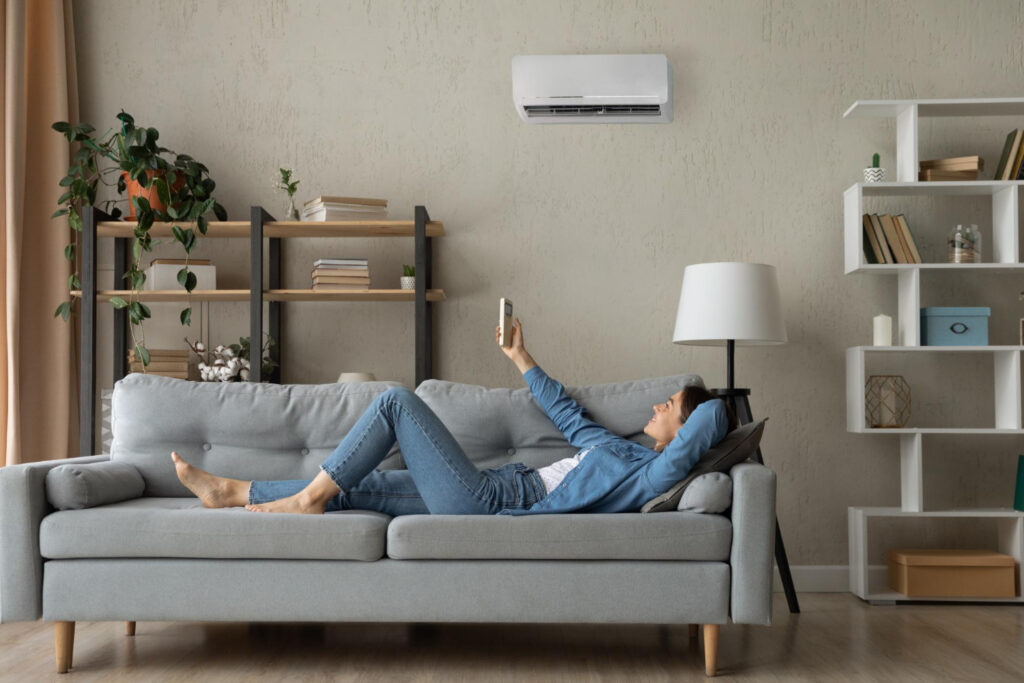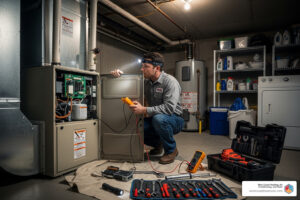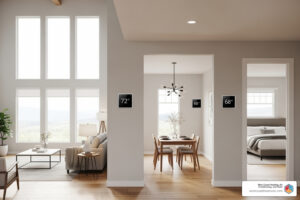When your AC remote suddenly stops working, it’s easy to assume the whole system is down. This is a common issue for homeowners in San Diego, especially during the hottest weeks of the year. You click the button a few times, maybe pop the batteries out and back in, but nothing changes. It’s frustrating not just because the cool air won’t kick on, but because it’s often unclear where the problem actually lies. In many cases, it’s not the AC unit that’s at fault, but a communication issue between the unit and the remote control.
If your AC isn’t responding the way it should, there’s a chance the issue begins with the remote itself. Problems like dead batteries, signal blockages, or internal damage are all common, especially when the remote is used daily. For San Diego homeowners relying on steady cooling during summer, resolving these issues quickly is important. Taking a closer look at how your remote behaves can help determine what steps to take next and whether professional help is needed.
Common AC Remote Control Issues
When an air conditioning remote starts acting up, there are a few specific issues that tend to pop up most often. These are usually simple enough to spot if you know what to look for. Understanding how each one affects system performance can help prevent bigger problems later.
Here are three of the most common AC remote problems seen in San Diego homes:
1. Unresponsive Remote
If pressing buttons doesn’t lead to any reaction from the AC unit, there could be several reasons:
– Weak or drained batteries
– Remote isn’t paired properly with the AC
– Internal circuit failure in the remote
Sometimes resetting the system solves this, but in other cases, a deeper check is needed.
2. Signal Interference
The remote uses infrared signals to communicate with the AC unit. If that signal gets blocked or redirected, your commands might not go through. Common causes include:
– Physical items between the AC and the remote, like furniture or curtains
– Dust or debris on the signal sensor
– Too much distance between you and the unit
3. Battery Issues
Old or cheap batteries may seem fine at first, but often can’t deliver enough power to maintain function over time. Some signs of failing batteries include:
– Remote lights flickering or turning off
– Signal input works sometimes but not consistently
– Buttons needing to be pressed extra hard or repeatedly
A good example comes from a San Diego homeowner who struggled all week with a remote that only worked when held at a very specific angle. After putting in fresh, high-quality batteries and wiping off the emitter lens, the issue disappeared. It was a simple fix, but one that saved a lot of stress.
With consistent use, especially during summer, these remotes take a beating. Knowing how to spot common signals of failure can help you act sooner instead of waiting for a costly breakdown. The next step is figuring out what you can check safely on your own before reaching out for additional help.
Troubleshooting Steps You Can Take
When your AC remote stops cooperating, starting with a few basic checks can save time and rule out simple issues. Many homeowners in San Diego can fix the problem with a few careful steps. These aren’t complicated, but each one plays a role in making sure the remote and unit are talking to each other correctly.
Here’s what to check before assuming the AC itself is malfunctioning:
1. Replace the batteries
If you haven’t changed them recently or are unsure how long they’ve been in use, swap in a fresh set from a reliable brand. Even if the indicator light appears, weak batteries may not transmit a strong enough signal.
2. Clear the line of sight
Curtains, furniture, or even a dust-covered shelf can block the infrared beam that connects the remote to the AC. Make sure nothing is in the way and wipe off both the remote’s sensor and the receiver on the AC unit.
3. Check the distance
AC remotes only work within a certain range. If you’re standing too far back or pointing it in a different direction, the unit might not register your commands.
4. Look for physical damage
If the remote has been dropped or exposed to moisture, internal damage could explain erratic behavior. Cracked screens or stuck buttons are other indicators that the remote may need to be replaced.
5. Reset the remote
Some models have a dedicated reset button, while others require removing the batteries and holding down the power button for several seconds. A reset clears any software misfires that might be preventing communication.
After going through these steps, many people find their remote is back to normal. But if the AC still won’t respond or the remote acts inconsistently again shortly after, it could be time to go deeper into the issue.
When It’s Time To Bring In Our Professionals
Sometimes you’ve gone through all the usual checks and the remote still won’t work as expected. That’s when it may be time to call in help. Too often, what seems like a small remote issue turns out to be a problem inside the unit itself, whether it’s a faulty circuit board, clogged sensor, or something else less visible.
There are certain signs that suggest it’s no longer a simple fix:
– You’ve already replaced the remote or tried multiple remotes with no improvement
– The AC responds only occasionally or inconsistently, even with a clear signal path
– You hear unusual sounds or notice unexpected behavior when using the remote
– Manual operation doesn’t work either, suggesting possible internal breakdown
Our professionals can test both the AC unit and the remote using tools and checks homeowners don’t typically have. It’s possible the issue lies with the control panel inside the AC, or that there’s a software fault affecting how it receives commands. These are things that need a deeper look.
Ignoring the issue could also put more strain on your entire cooling system. If commands are being delayed or misread, the unit may overwork itself, which can shorten its overall lifespan. Getting in front of that early helps avoid the kind of breakdown that leaves you without cooling in the middle of a San Diego summer.
Restoring Comfort With A Reliable Solution
It’s easy to assume your AC is failing when it doesn’t respond, but many times the actual issue is remote-related. A stuck button, an old battery, or even a dusty screen can bring the whole system to a stop. By spotting the early warning signs like inconsistent signals or weak responses, you can act fast and avoid damage to larger AC components in the process.
Smart troubleshooting starts with knowing when to check simple things first and when to let trained professionals handle the rest. Getting the system checked out before peak heat arrives is always a better plan than waiting for a full shutdown. Remote control problems, while sometimes minor, can quickly impact the whole system if left unchecked.
San Diego homeowners who pay attention to how their AC remote behaves are in a better position to keep their homes consistently cool through the summer. Something as small as a remote might not seem important, but getting back full control of your system can help restore the convenience, comfort, and reliability you rely on every day.
If your troubleshooting efforts haven’t resolved the issue, professional AC repair in San Diego can help restore the performance and reliability of your cooling system. West Coast Heating, Air Conditioning, and Solar provides expert solutions tailored to the needs of your home, ensuring consistent comfort during the hottest months. For a quick estimate or to book a service visit, please contact us today.





